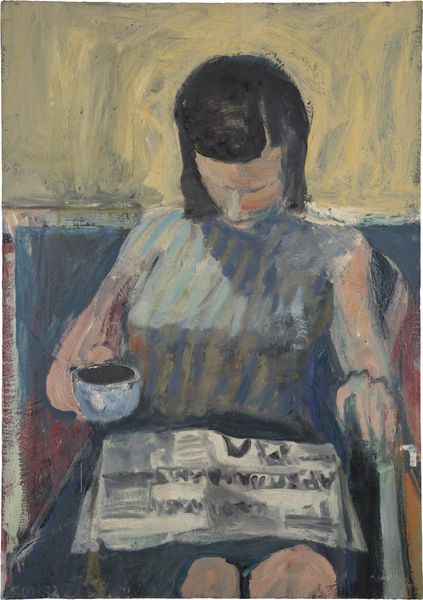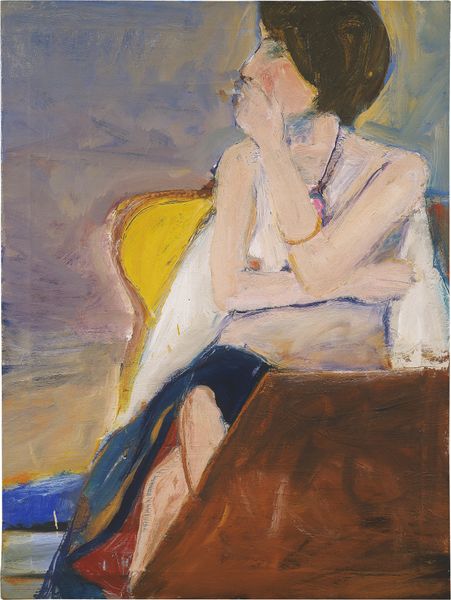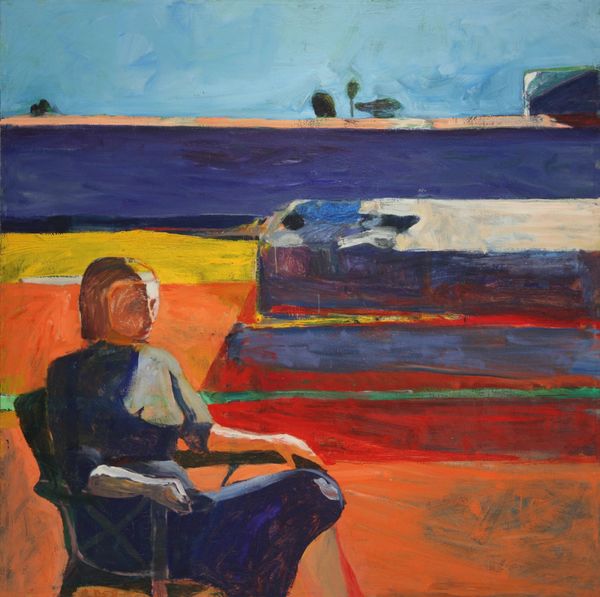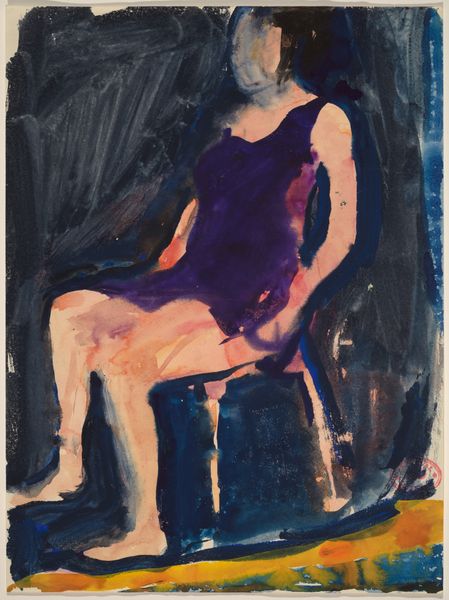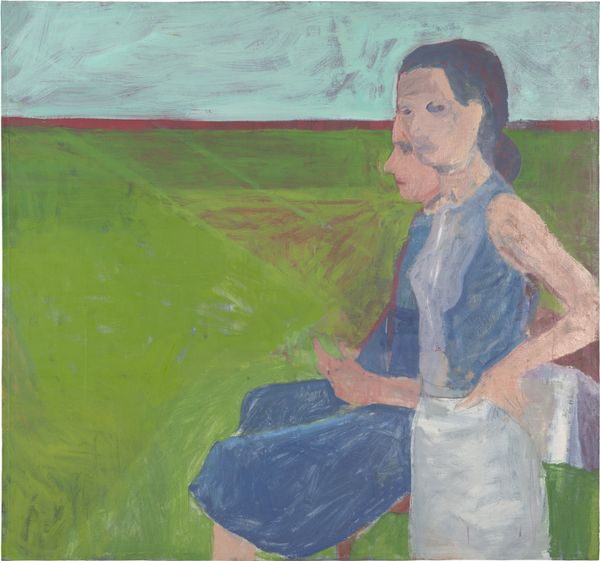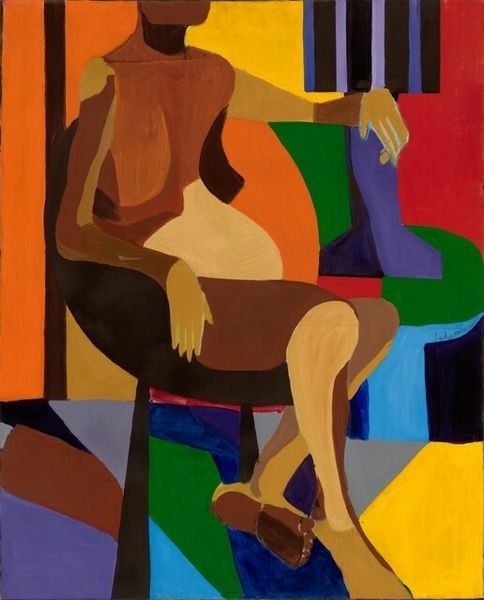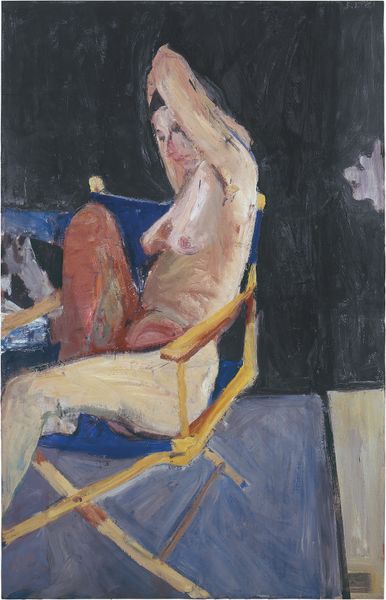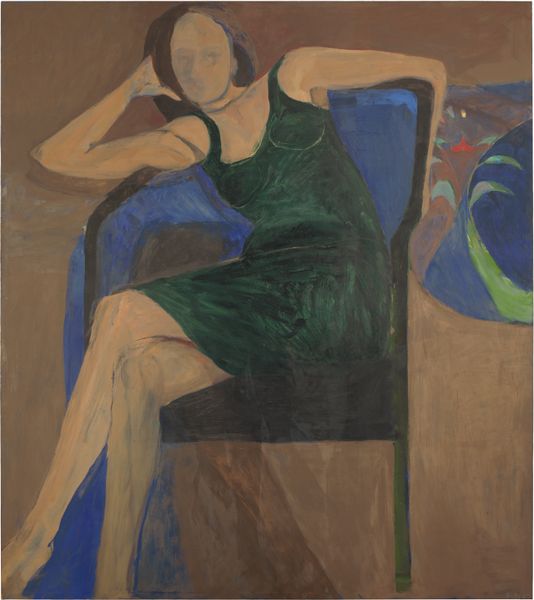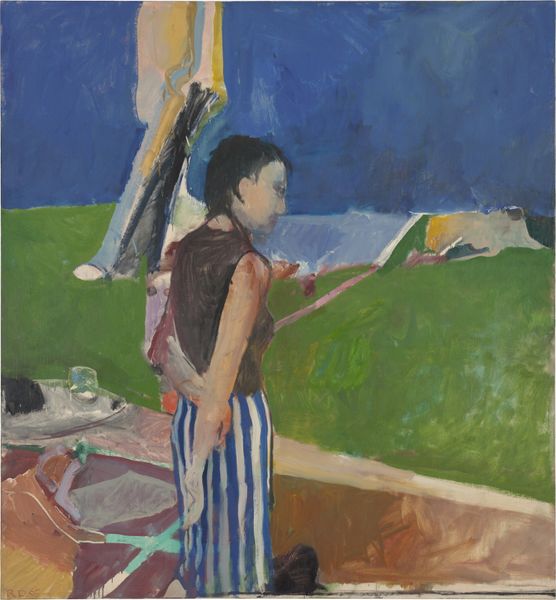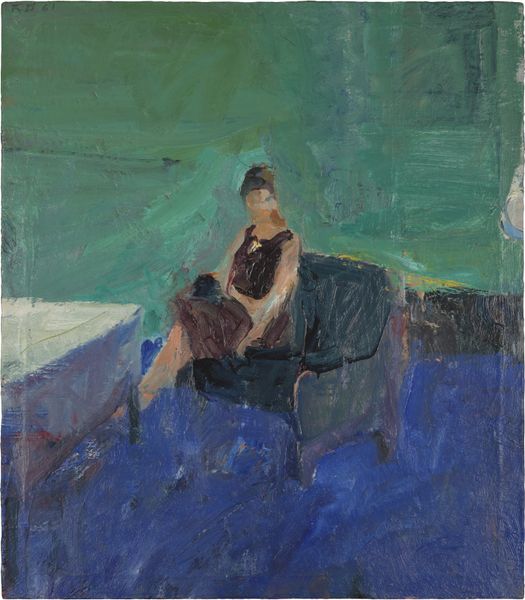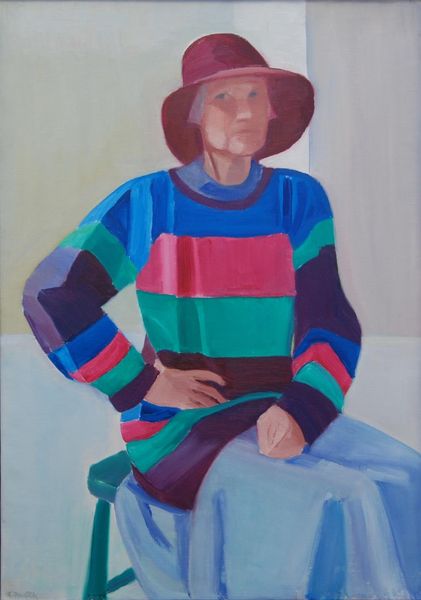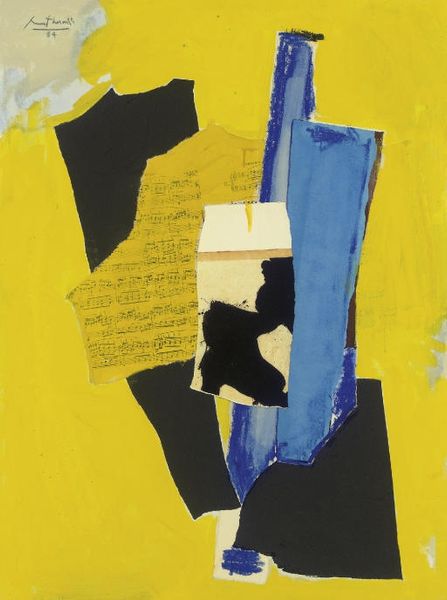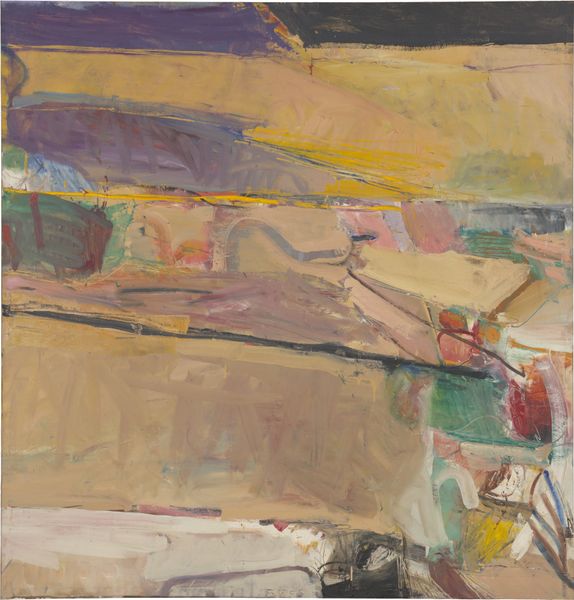
#
bay-area-figurative-movement
Dimensions: 146.7 x 156.8 cm
Copyright: Richard Diebenkorn Foundation
Editor: This is "Seated Woman," painted by Richard Diebenkorn in 1967. It's an oil painting, and I’m immediately struck by the flatness of the planes, almost like simplified shapes pieced together. What stands out to you in this work? Curator: I'm drawn to the visible labor inherent in the impasto and the repetitive brushstrokes. We can see how Diebenkorn constructed the image, almost like a house built brick by brick. How does the materiality affect the figure's presence, for you? Is she weighty, solid, or something else? Editor: It makes her feel both substantial and ephemeral, existing as much in the paint as in the world. It makes me think of the physical act of applying the oil. Is there a particular process implied by the style that might speak to something deeper in the social or political context of the time? Curator: Absolutely. The deliberate layering and reworking suggests a grappling with form, mirroring societal shifts and reconsiderations of traditional representations of women in the mid-20th century. The visible hand of the artist, through the prominent brushwork, is also refusing a seamless, mass-producible image. Do you see that tension between the personal and the collective being relevant here? Editor: I do. The raw visibility of process adds a personal, intimate dimension. This wasn’t meant to look 'effortless,' and the materiality carries significant weight in meaning, literally. Curator: Indeed. This shift challenged established artistic norms, suggesting that art could be an open record of process. The labour, in that sense, is the message. Editor: I hadn't considered that reading! It’s interesting how analyzing the tangible aspects – the materiality and process – reframes how we interpret the subject itself. Thanks for highlighting this. Curator: It also demonstrates that the methods an artist uses tell stories beyond the final picture and provide a cultural context to explore.
Comments
No comments
Be the first to comment and join the conversation on the ultimate creative platform.
